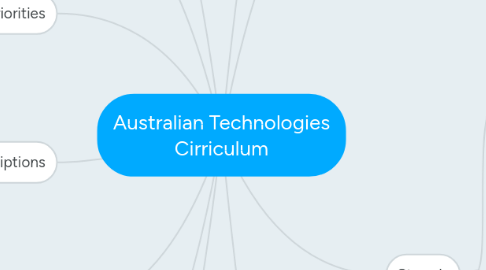
1. Curriculum aims and objectives
1.1. Use traditional, contemporary and emerging technologies in a creative, innovative and enterprising way, and understand how technologies have developed over time.
1.2. Select and manipulate appropriate technologies and resources when creating products and services.
1.3. Evaluate and understand different processes in an endeavour to create solutions for a range of problems and opportunities.
1.4. Investigate, design, plan, manage, create, produce and evaluate technologies solutions.
1.5. Interact confidently with various technologies engage confidently with technologies and make informed, ethical and sustainable decisions about technologies for preferred futures including personal health and wellbeing, recreation, everyday life, the world of work and enterprise, and the environment.
2. Subjects
2.1. English
2.2. Mathematics
2.3. Science
2.4. History
2.5. Geography
2.6. The arts
2.7. Health and Phys ed.
3. Strands
3.1. Knowledge and understanding
3.1.1. Design and technologies
3.1.1.1. the use, development and impact of technologies in people’s lives
3.1.1.2. design concepts across a range of technologies contexts
3.1.2. Digital technologies
3.1.2.1. how data are represented and structured symbolically
3.1.2.2. the components of digital systems: software, hardware and networks
3.1.2.3. the use, development and impact of information systems in people’s lives
3.2. Processes and production skills
3.2.1. Design and technologies
3.2.1.1. critiquing, exploring and investigating needs or opportunities
3.2.1.2. generating, developing and evaluating design ideas for designed solutions
3.2.1.3. planning, producing (making) and evaluating designed solutions
3.2.2. Digital technologies
3.2.2.1. collecting, managing and interpreting data when creating information, and the nature and properties of data, how it is collected and interpreted
3.2.2.2. using a range of digital systems and their components and peripherals
3.2.2.3. defining problems and specifying and implementing their solutions
3.2.2.4. creating and communicating information, especially online, and interacting safely using appropriate technical and social protocols
4. Key concepts/ideas
4.1. Systems thinking and the overarching idea: Creating preferred futures
4.1.1. The Technologies curriculum focuses on systems thinking to develop the technologies knowledge, understanding and skills to provide a method for identifying and moving towards ethical, socially responsible and sustainable patterns of living. Systems thinking is a holistic approach where parts of a system are analysed individually to see the whole, the interactions and interrelationships between the parts and how these parts or components influence the system as a whole. In both Design and Technologies and Digital Technologies this provides opportunities for students to engage in predicting outcomes and impacts of technological decisions for current and future generations and their environments. Students creatively and actively design solutions to meet present needs without compromising the ability of future generations to meet their needs. Both subjects acknowledge the strong connection with the Australian Curriculum: Sustainability cross - curriculum priority
4.2. Project management
4.2.1. The Technologies curriculum ensures that students are explicitly taught how to manage projects. This includes planning; evaluating processes; considering constraints; risk assessment and management; decision - making strategies; quality control; developing resource, finance, work and time plans; and collaborating and communicating with others at different stages of the process. Every technologies project involves the use of resources and it is critical that there is planning for sustainable use of resources when managing projects. Technologies projects involve ethical, health and safety considerations. They are designed for the different needs (including consideration of personal and social beliefs and values) of consumers and clients, and for commercial realities. Students learn that when they and others engage in design thinking and technologies processes, they are responsible and accountable for their designs and solutions. Project management is an essential element in building students’ capacity to successfully innovate in both Technologies subjects. Project work and project management occur as a part of everyday life and are critical to many fields of technologies employment. Technologies education allows students to develop skills to manage projects from identification of need or opportunity through conception to realisation. Project management is addressed in all years of schooling as individuals and groups of students plan how they will work to bring a design idea to fruition. Assessing and managing risk in Technologies learning addresses the safe use of technologies and the risks that can impact on project timelines. It covers all necessary aspects of health, safety and injury prevention at any year level and in any technologies context when using potentially dangerous materials, tools and equipment. It includes ergonomics, safety including cyber safety, data security and ethical and legal considerations when communicating and collaborating online.
